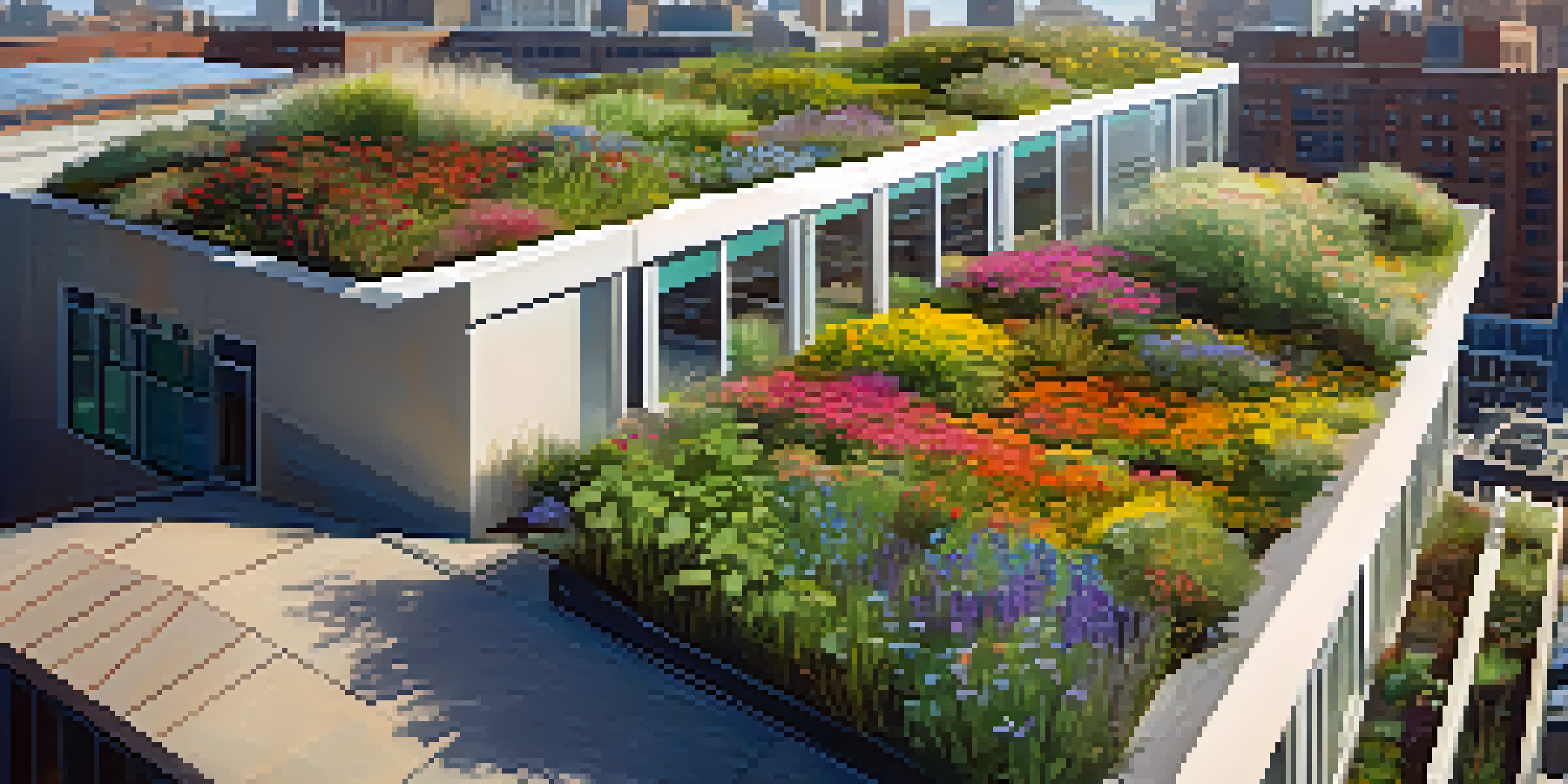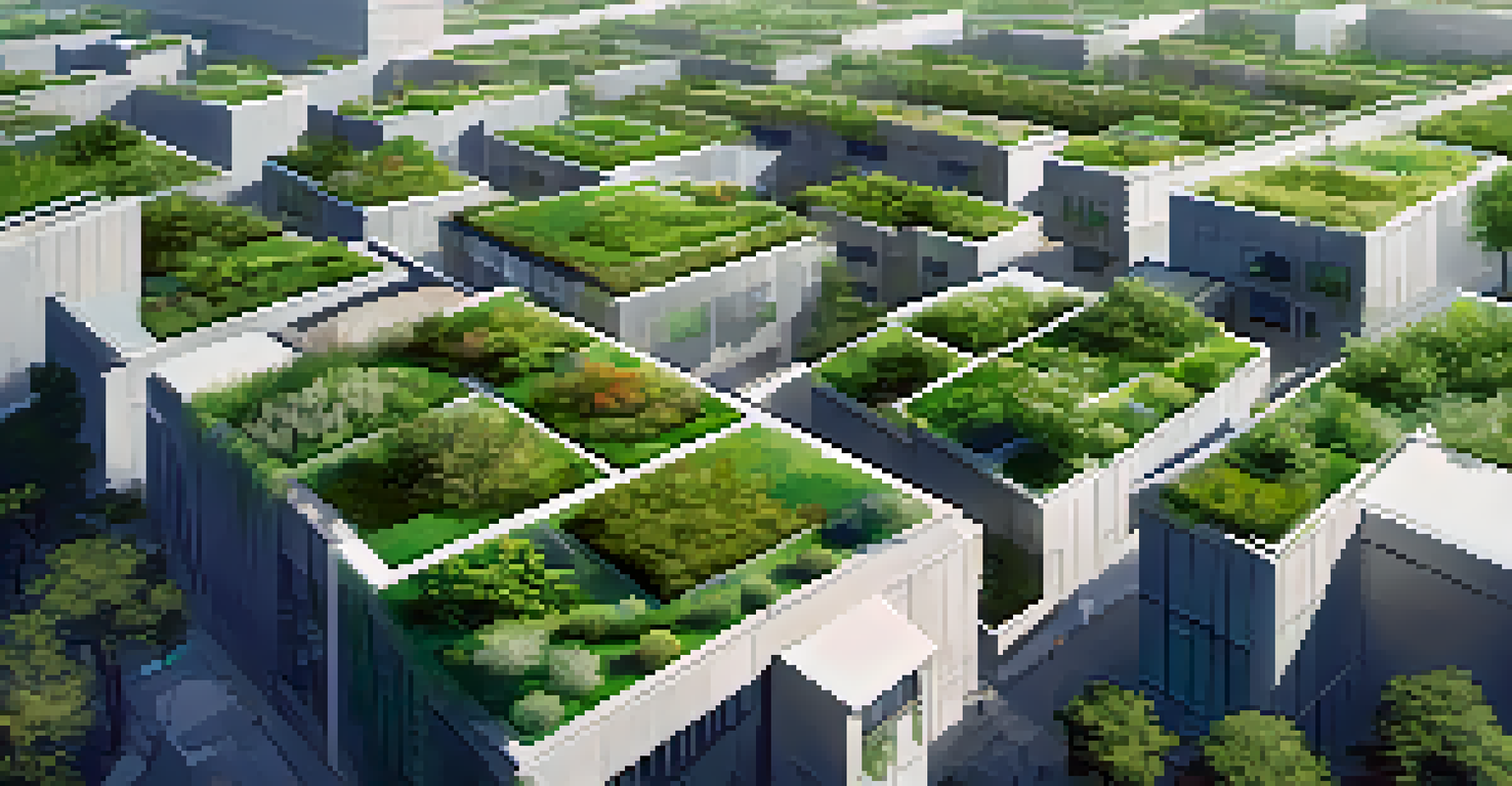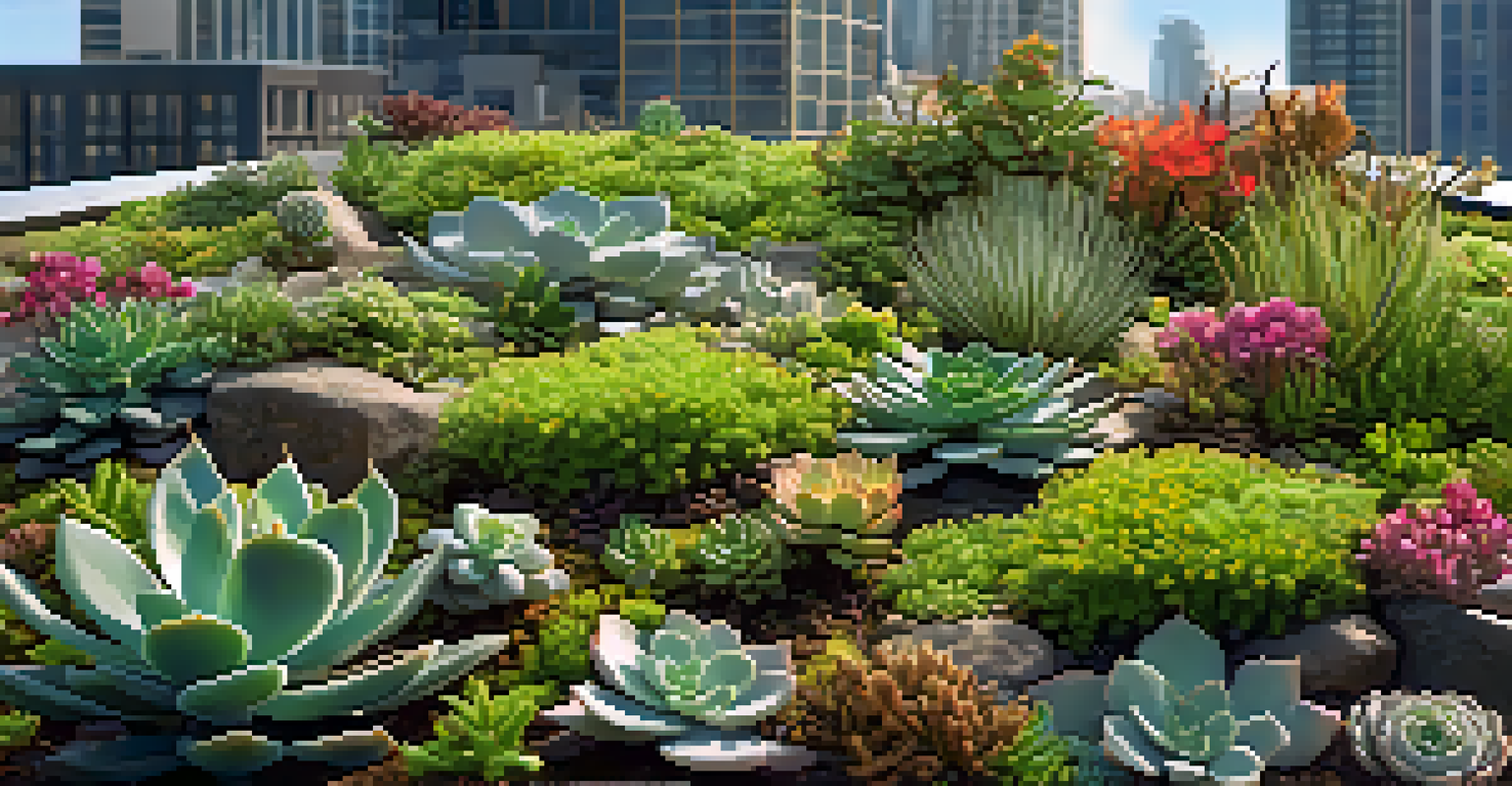Green Roofs: Enhancing Energy Efficiency in Homes

What Are Green Roofs and How Do They Work?
Green roofs, sometimes referred to as living roofs, are layers of vegetation planted on top of a building. They provide a natural space that not only beautifies a property but also offers numerous environmental benefits. Essentially, these roofs act like a sponge, absorbing rainwater and providing insulation, which can lead to lower energy costs.
Green roofs are a powerful tool to combat the urban heat island effect, reduce energy costs, and improve air quality.
The setup typically includes a waterproof membrane, a drainage system, and a growing medium to support plant life. This combination creates a thriving ecosystem right on your rooftop. For example, a properly designed green roof can reduce indoor temperatures in summer by providing natural cooling.
Moreover, green roofs can help mitigate the urban heat island effect, where urban areas become significantly warmer than their rural surroundings. By increasing the amount of vegetation in cities, we can help combat this phenomenon, making urban living more sustainable and pleasant.
Energy Efficiency Benefits of Green Roofs
One of the standout benefits of green roofs is their ability to enhance energy efficiency in homes. The vegetation and soil layers provide excellent insulation, which helps keep your home cooler in the summer and warmer in the winter. This means your heating and cooling systems don’t have to work as hard, ultimately lowering your energy bills.

For instance, studies have shown that homes with green roofs can achieve energy savings of up to 25%. This is particularly advantageous in regions with extreme climates, where temperature fluctuations can lead to significant energy consumption. By investing in a green roof, homeowners can enjoy a more comfortable living environment without breaking the bank.
Green Roofs Enhance Energy Efficiency
Green roofs provide excellent insulation, leading to potential energy savings of up to 25% for homeowners.
Additionally, green roofs can extend the life of your roofing materials by protecting them from harsh weather conditions. This not only saves money on replacement costs but also reduces the amount of waste going to landfills, contributing to a more sustainable future.
Improving Air Quality with Green Roofs
Green roofs contribute to improved air quality by filtering pollutants and producing oxygen. The plants absorb carbon dioxide and other harmful gases, making the air around your home cleaner and healthier. This is especially important in urban areas, where air pollution can have serious health implications.
The creation of green roofs not only enhances biodiversity but also contributes to the sustainability of urban environments.
Moreover, the vegetation on green roofs captures particulate matter, which can reduce smog and improve overall air quality. Imagine living in a space where the air is fresher and more invigorating, all thanks to a rooftop garden. This not only benefits homeowners but also the broader community, leading to healthier living conditions for everyone.
In addition, the cooling effect of green roofs can help lower ground-level ozone levels, further enhancing air quality. By investing in a green roof, you’re not just improving your immediate environment; you’re contributing to the health of your entire neighborhood.
Sound Insulation: A Quiet Home with Green Roofs
Another often-overlooked benefit of green roofs is their ability to reduce noise pollution. The layers of soil and plants can absorb sound, making your home a quieter sanctuary amidst the hustle and bustle of city life. This is particularly valuable in densely populated areas where noise can be a significant issue.
For example, studies have indicated that green roofs can reduce noise levels by up to 40 decibels, which is comparable to the sound insulation provided by conventional roofing systems. Imagine relaxing in your home without the constant hum of traffic or construction noise—not only is it more peaceful, but it can also enhance your overall well-being.
Green Roofs Improve Air Quality
By filtering pollutants and producing oxygen, green roofs contribute to cleaner air, especially in urban areas.
This sound absorption can lead to improved quality of life and better sleep, making your home a more enjoyable place to live. The tranquility provided by a green roof is just one more reason to consider this sustainable option.
Biodiversity Boost: Green Roofs and Urban Wildlife
Green roofs can serve as vital habitats for various species, helping to increase biodiversity in urban areas. By incorporating native plants, these roofs can attract birds, bees, and other wildlife, creating a thriving ecosystem high above the ground. This not only supports local flora and fauna but also contributes to the overall health of the environment.
For instance, many cities are implementing green roofs as part of their urban planning to create wildlife corridors. These green spaces can connect fragmented habitats, allowing species to thrive despite urbanization. Imagine your rooftop becoming a mini-ecosystem, buzzing with life and color.
Additionally, fostering biodiversity can have positive effects on local pollination, which is crucial for food production and ecosystem health. When you install a green roof, you’re not just enhancing your property; you’re making a significant contribution to the environment and the wildlife that inhabits it.
Cost Considerations: Are Green Roofs Worth the Investment?
While the initial cost of installing a green roof can be higher than traditional roofing options, the long-term benefits often outweigh the investment. Homeowners can expect to see significant savings on energy bills, reduced maintenance costs, and even potential tax incentives in some areas. This makes the upfront investment more manageable over time.
Moreover, green roofs can increase property values, appealing to eco-conscious buyers who see the long-term benefits of sustainable living. It’s not just an upgrade; it’s an investment in the future of your home and the planet. Think of it as planting a seed that will grow into both aesthetic and financial returns.
Green Roofs Foster Urban Biodiversity
These living roofs create vital habitats for wildlife, enhancing biodiversity and supporting local ecosystems.
Additionally, as more people become aware of environmental issues, properties with green roofs may become more sought after. This trend can lead to a quicker return on investment, making your green roof not only an eco-friendly choice but a savvy financial one as well.
Getting Started: How to Install a Green Roof
Installing a green roof is a multifaceted project that requires careful planning and execution. First, it’s essential to assess your building’s structural integrity and ensure it can support the added weight of soil and plants. Consulting with a professional can help you determine the best approach for your specific situation.
Next, you'll need to choose the type of green roof you want: extensive, semi-intensive, or intensive. Extensive green roofs are lightweight and require minimal maintenance, while intensive roofs allow for a wider variety of plants and can include walkable spaces. This choice will depend on your budget, maintenance preferences, and desired aesthetic.

Finally, selecting the right plants is crucial for the success of your green roof. Opt for native, drought-resistant species that thrive in your local climate. With the right planning and care, your green roof will flourish, providing a beautiful and functional addition to your home.